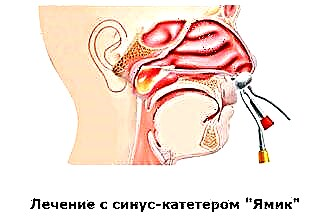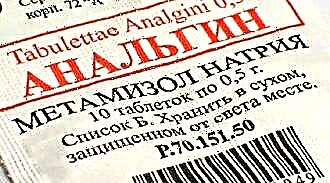Extrasystoles on an ECG (electrocardiogram) - early unnatural contractions (in relation to the usual, sinus rhythm) of the heart. Similar phenomena are found in people of any age and are not always considered a sign of a particular disease. Premature heartbeats are indicators of heart disease or other serious conditions. They are more common in older patients, those with high blood pressure or heart disease.
What is the origin of extrasystoles associated with
The heart consists of four chambers - two upper (atria) and two lower (ventricles). The heartbeat is controlled by the sinoatrial node (SA-bundle) by a zone of special cells located in the right atrium.
This natural pacemaker creates electrical impulses that cause a normal heartbeat. From the sinus node, they pass through the atrium to the ventricles, forcing them to contract, pumping blood through the body.
Extrasystoles occur earlier than the next contraction with a normal heart rate on the ECG. They interrupt the correct order of the organ. As a result, additional, asynchronous strokes are less effective in transporting blood through the body. Single intercalated extrasystoles do not affect the ability of the heart muscle to contract. Therefore, they do not cause any symptoms if they do not occur frequently.
The reasons for the appearance of extrasystoles are different. Heart disease or scarring of the heart muscle is the source of the erroneous occurrence of electrical impulses. Certain triggers make the cells of the organ electrically unstable. Possible causes of extrasystole are presented below:
- chemical changes, pathologies of electrolyte and acid-base balance of blood in the body;
- certain medications, including medications for asthma;
- alcohol or drugs;
- significant levels of adrenaline in the body due to caffeine, nicotine, exercise, or anxiety;
- damage to the heart muscle due to coronary heart disease, congenital heart disease, high blood pressure, or heart failure.
Classification
The electrical activation of the heart is caused by impulses, the source of which is in different parts of the organ. There are such types of extrasystoles:
1. Supraventricular (supraventricular) extrasystoles - premature contraction that occurs in the upper chambers of the heart (atria). Occur in healthy people (up to 60% have at least one in 24 hours).
2. Ventricular (intercalated, including) extrasystoles occur when the ectopic impulse leaves the lower chambers of the heart (right ventricular and left ventricular type). If there is no chronic cardiopathology, most of them are harmless. Nevertheless, some sources indicate dysfunction of the ventricles at a high frequency of extraordinary contractions. This is typical for patients who have had myocardial infarction, or with a structural pathology of the atrioventricular complex.
Symptoms and Signs
Patients with infrequent premature contractions often do not report symptoms. They find extrasystoles in preparation for surgery. In other cases, manifestations appear against the background of a standard heart rate and are accompanied by a pause. It is visualized like "missed" beats or a sensation of stopping the heartbeat. When probing the pulse in such patients, the loss of the pulse wave is recorded.
Also, patients note that extrasystoles cause a feeling of heart sinking, falling from a height, jumping from a springboard. Complaints are replenished with sensations of interruptions in the heartbeat. They are uncomfortable and generate significant anxiety. Symptoms that get worse with exercise are the most disturbing and important. Other manifestations are also likely:
- fainting or dizziness;
- atypical chest pain;
- fatigue;
- fainting while coughing.
Modern diagnostic methods
The main methods for determining extraordinary heartbeats are electrocardiography and ECG monitoring using the Holter apparatus.
Extrasystole on ECG
In a standard ECG test, sensors are attached to the chest and limbs to create a graphical record of electrical signals passing through the heart. Premature ventricular contractions are easily recognized on film if recorded during the procedure. The main signs of ventricular extrasystole on the ECG when decoding:
- One or more QRS complexes with an abnormal shape and atypical position are registered. The untimely complex, corresponding to the ventricular extrasystole, is enlarged (above 120 ms) and deformed. The structure is informative regarding the focus of the onset of extrasystole, especially if it is polytopic.
- After the extrasystole, a full compensatory pause follows, which occupies part of the RR interval between the pathological complex and the next normal Q.

Photo 1
Photo 1 shows an isolated extraordinary ventricular contraction with a wide QRS complex (highlighted in blue circle). Full compensatory pause is present because the distance between QRS complexes is equal to two RR intervals.
An example of a right ventricular extrasystole on the ECG looks like a block of the left bundle branch, and extrasystoles of the left ventricle - as a right-sided block of the bundle branches.
Holter monitoring
Premature contractions are not detected in a short time with a standard ECG. In such cases, the use of a Holter monitor for 24 hours will be required to capture any abnormal rhythms. 24-hour monitoring is used to diagnose extraordinary myocardial contractions and other cardiac arrhythmias: atrial fibrillation, atrial flutter and ventricular tachycardia.

Photo 2
Photo 2 shows multiple ventricular extrasystoles on the ECG (highlighted in a blue rectangle on the recording), which alternate with QRS complexes of a normal rhythm (red ellipses). This situation is more threatening than isolated ventricular extrasystoles (photo 1).
When conducting daily monitoring, the criterion of significant ECG signs of extrasystoles is more than 200 supraventricular extraordinary electrical impulses.
Is it worth fighting extrasystoles
Since such a failure of the heart rhythm is a common occurrence for a large number of people who do not have organic lesions of the heart, the question remains: do the extraordinary contractions of the myocardium require medical intervention?
Basic principles of treatment and prevention of complications
The decision on whether to treat extrasystole depends on the concomitant heart disease and the frequency of uncomfortable symptoms. Risk factors, conditions, and triggers that increase the likelihood of premature contractions eliminate or compensate for:
- caffeine, tobacco and alcohol;
- high blood pressure (hypertension);
- chronic stress;
- organic diseases of the heart muscle, including congenital heart defects, coronary artery disease, heart failure.
If, after examinations, the doctor concluded that extrasystoles are caused by problems of other organ systems (not cardiovascular), then the patient treats the causes-provocateurs of rhythm disturbances. The pathological significance of ventricular extrasystoles increases with their number. The more incorrect contractions, the more likely the development of serious consequences of arrhythmia.
The clinical significance of extrasystoles depends on the context in which they occur.:
- in young patients without structural heart disease, abnormal contractions are usually not associated with an increased risk of sudden cardiac death;
- in older patients, especially with ischemic disease, there is an extremely high risk of instant asystole (cardiac arrest) with prolonged ventricular arrhythmia;
- people after myocardial infarction avoid atrioventricular premature beats due to the high probability of malignant fibrillation, which blocks the impulse outgoing from the sinoatrial node.
How often to visit a cardiologist with extraordinary heart contractions
A person with a normal number of extrasystoles is shown observation by a doctor with regular examination twice a year in order to timely identify structural changes or deterioration in the functional state of the heart. If the patient is registered with a cardiologist with chronic myocardial pathology, which is associated with ischemia, hypertension, he is prescribed a consultation at the slightest negative change in the state. In the case of a favorable course of arrhythmia, such a patient visits the doctor once every three months.
Conclusions
Extrasystoles are often detected during cardiogram recording. When the extraordinary contractions are isolated, they are of little clinical importance and are found in healthy people. Frequent extrasystoles are associated with an increased risk of developing dangerous cardiac episodes and complications in patients.
Self-help strategies to help prevent extrasystoles:
- Track triggers... This will identify substances or activities that trigger premature contractions.
- Change your lifestyle... Caffeine, alcohol, tobacco and other recreational drugs are provocateurs of premature ventricular contractions.
- Deal with stress... Anxiety causes abnormal heartbeats. If you think your worry is making your condition worse, talk to your doctor about prescribing sedatives.



